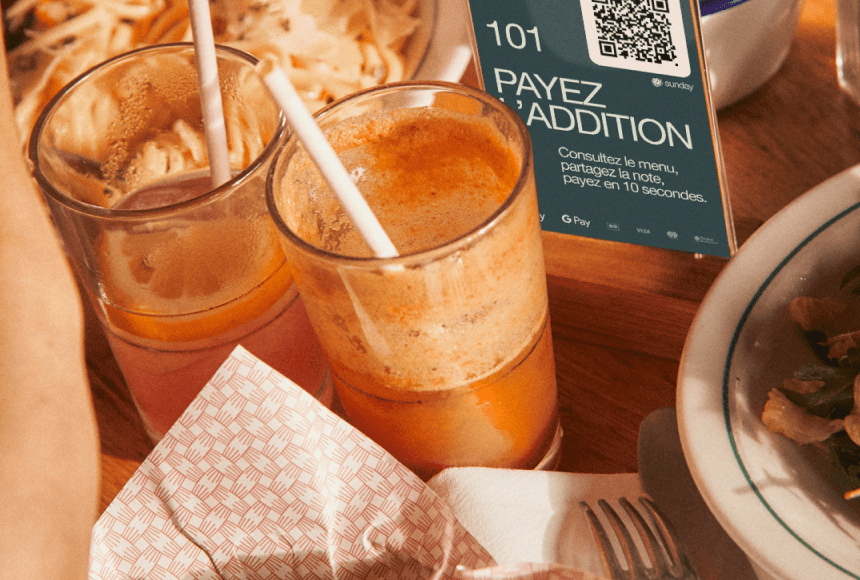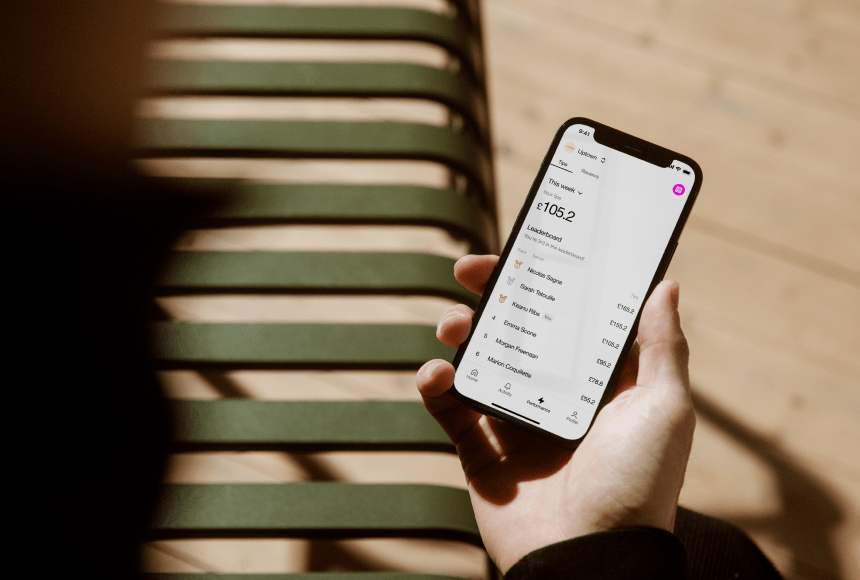
Reimagining the Dine-In Journey with Seamless, On-the-Spot Checkout
Why Tableside Payment Has Become a Must-Have
Picture your restaurant on a lively Saturday evening. Every seat is taken, the bar is bustling, and servers dart between tables carrying trays of mouthwatering dishes. Now imagine that moment when your customers have finished their meals, and all they want is to pay and head off to enjoy the rest of their night. Yet, if your staff is busy, they may find themselves waving for attention or waiting for a card machine to become free.
This is where tableside payment — the ability for customers to settle their bill right at their table, via QR code or handheld device — swoops in to save the day. What used to be a fancy novelty has rapidly shifted into a must-have convenience for diners. And as many restaurant owners have found, it’s not just about shaving minutes off the checkout process. It can redefine the entire dining experience.
From elevating service levels to boosting tips and reviews, tableside payment is quickly becoming a game-changer for establishments that value efficiency and guest satisfaction. Let’s explore how it works, why it matters, and how it can reshape the way your customers interact with your restaurant.
How It Works: A Simple, Modern Twist
Tableside payment may sound high-tech, but in practice, it’s surprisingly simple. Here’s a snapshot of what it typically looks like:
- QR Code Scan: Diners finish their meal, scan a small QR code on the table using their phone’s camera (no download required in most cases), and the bill pops up instantly on their screen.
- Review and Tip: Guests review their order, add a tip if they wish, and select a payment method. Some solutions also provide an option to split the bill in seconds.
- One-Tap Pay: Payment is processed in real time through a secure gateway. No rummaging for cash, waiting for a card machine, or handing over a bank card.
- Optional Review: Many systems (like Sunday) gently invite diners to leave a Google review right after completing payment, capitalising on that moment of positive engagement.
As soon as this last step is done, the table is effectively closed. This frees both the server and the customer from any follow-up tasks, making the entire experience feel smooth and fuss-free.
The End of the Awkward Payment Dance
You’ve likely seen that moment of confusion when diners start stacking up plates, throwing glances around, or awkwardly waving a hand to catch the server’s eye. It’s not a great final impression. In fact, a OpenTable survey (OpenTable data) indicated that lengthy wait times at the end of a meal can sour an otherwise pleasant dining experience.
Tableside payment breaks this cycle. Instead of needing a staff member to run the transaction, diners can close out on their own terms. This sense of control can be particularly appealing to customers who, after a great meal, want to leave at a time of their choosing, not when a card terminal becomes available.
Moreover, your servers no longer have to juggle multiple payment requests during peak hours. Less time chasing bills, more time addressing any special requests or focusing on delivering that personal touch. It’s a win-win.
Boosting Gratuities and Positive Reviews
Tipping can feel awkward when diners need to do mental maths or navigate a small keypad on a handheld card machine. With a digital payment solution, a clear tip prompt is often built into the checkout flow. Diners simply tap a percentage or enter an amount, which can naturally lead to more frequent and sometimes higher tips.
- Visual Clarity: When guests see easy tip options — like 10%, 12.5%, or 15% — they’re more likely to pick one than to type out a custom figure.
- Less Social Pressure: Some guests feel awkward tipping in front of a server. A phone-based system lets them add gratuity privately.
Additionally, right after the payment is done, an invite to leave a Google review can pop up. Diners who’ve just enjoyed a great meal are in the perfect headspace to share a quick, positive note. The result? More reviews with higher star ratings, boosting your online visibility and social proof.
Freeing Up Staff to Be Hosts, Not Just Cashiers
One of the biggest concerns among restaurant owners is the fear that technology might replace the human interaction diners crave. The reality is, it can do the opposite: by removing repetitive tasks from the servers’ plates, it allows them to focus on hospitality.
Servers no longer have to run back and forth with payment terminals, wait for receipts to print, or fumble with card machines. Instead, they can:
- Chat About Menu Items: Spend a few extra moments recommending that perfect craft beer or discussing how the chef prepares a seasonal dish.
- Quickly Handle Issues: If a guest has a concern about the food, staff can address it immediately rather than being tied up with taking payments at another table.
- Upsell Dessert or Drinks: With more time, servers can engage customers about coffee, dessert, or a digestif, often increasing the table’s total bill.
All this personal attention helps create a memorable experience. Ultimately, diners leave with a sense that your restaurant truly values them, which fosters loyalty and word-of-mouth recommendations.
Streamlined Operations: A Hidden Benefit
It’s not just the front of house that benefits from tableside payment. For restaurants where everything ties into a point-of-sale (POS) system or ordering platform, these solutions can automatically record transactions, update inventory, and link payments to particular checks.
- Real-Time Accuracy: When the guest pays directly from their smartphone, you reduce the risk of manual entry errors. The final amount gets logged exactly as it appears on the digital bill.
- Faster Table Turnover: With no waiting around for someone to bring the machine, tables tend to clear quicker. During peak hours, that might mean fitting in an extra sitting or two.
- Immediate Insights: Systems like Sunday can deliver instant sales data. You’ll see how well that new cocktail is performing or if a particular starter is surging in popularity.
In short, your staff can spend less time bogged down by grunt work and more time improving the overall service flow. Even subtle gains in speed can translate into better table dynamics and potentially higher daily revenue.
A Better Experience for Groups
Large groups can be both a delight and a challenge. They often have big orders, but splitting the bill can turn into a mini-nightmare of credit cards and confusion about who owes what. Tableside payment solves this headache neatly.
In many systems, each person in a group can scan the same QR code, see their share of the total, and pay individually on their own phone. No need for the server to collect multiple card payments or calculate separate bills. It’s quick, clear, and drastically cuts the chaos.
For large bookings like birthday parties or work events, that smooth end-of-meal process can be a memorable highlight, instead of the dreaded final hurdle. The group is happier, and your servers can move on to other tables without juggling separate checks or waiting for a line at the till.
Accommodating the Tech-Savvy (and the Reluctant)
Some owners worry that not all guests will embrace table-side payment. But in 2025 and beyond, smartphone usage spans almost every demographic. According to Ofcom’s Online Nation study (Ofcom’s research), even older age groups are now comfortable scanning QR codes and using mobile transactions.
Still, you might want a fallback for anyone who feels uneasy. Keep a card reader on hand, or let them settle at the till. The key is giving diners a choice. For the vast majority of your customers, though, the tap-or-scan approach will likely feel second nature.
Harnessing Feedback and Data
When you combine payment by QR code with integrated ordering platforms, you unlock powerful data about your customers’ preferences. You can see which items they order, how frequently they visit, and whether they tip more at lunch or dinner. This knowledge can steer menu updates, promotions, and loyalty programmes.
- Post-Payment Surveys: Slip in a quick poll about the meal — “Which new dessert should we keep?” or “Did our fish special hit the spot?” The feedback arrives in real time, letting you adapt faster.
- Loyalty Integration: If you already run a loyalty system, the payment process can automatically track points. It’s frictionless, so customers stay engaged without having to fuss with stamps or membership numbers.
Insights gained from digital payments can lead to smarter business decisions. Perhaps you’ll realise that your popular main course never pairs with your new craft beer. That’s an opportunity to market them together. Or, if a dish is consistently left half-eaten, it might need a portion adjustment or recipe tweak.
Security and Peace of Mind
Security concerns are often the first question. Is a phone-based payment solution safe? The answer is, in many cases, safer than the old method of handing a card to a server.
Reputable solutions employ encryption and tokenisation that meet strict industry standards. Diners don’t have to pass their card around; they just handle everything privately on their own device. This can reduce fraud and card-skimming risks.
If you’re choosing a new service, ensure it’s PCI-compliant (Payment Card Industry compliance). Once you confirm that box, you can reassure guests that they’re in safe hands, digitally speaking.
Emphasising Speed without Losing Heart
One cautionary note: just because tableside payment brings efficiency doesn’t mean you should let your service become cold or mechanical. Quick transactions should never mean rushing your diners out the door. Instead, see it as removing friction so you can focus on conversation, recommendations, and memorable touches.
For instance, you might:
- Offer a Next-Step Prompt: After paying, customers can easily leave a comment or suggest a dish they’d like to see next time. Encourage them to share ideas, boosting their sense of involvement.
- Personalised Thank-Yous: Some platforms let you display a short note once the payment is processed. This could be a heartfelt thank you or a perk for their next visit. Small gestures reinforce a positive impression.
- Encourage Authentic Interaction: If you see regulars scanning the code, drop by for a quick chat anyway. They’ll appreciate that you value them beyond just “another table.”
Ultimately, technology should complement — not replace — real hospitality. Keeping that balance is key to forging genuine relationships with guests.
Rolling It Out Smoothly: A Few Tips
- Choose a User-Friendly Platform:Look for intuitive interfaces where customers don’t need to download apps or create accounts. That initial friction can kill adoption. Simplicity rules.
- Train Your Team:Involve servers early, explain how tableside payment supports better tips and frees them up for real hospitality. Encourage them to walk first-time users through the process, if needed.
- Promote It:Display small signs or table toppers mentioning how easy it is to scan and pay. A short explanation helps curious diners understand the new system.
- Offer a Plan B:Keep a standard card reader for those who aren’t comfortable with scanning. That said, you’ll find many adapt quickly once they see how quick and slick it is.
- Monitor Feedback:Ask staff and customers how they find the new process. If any confusion arises, refine your signage or instructions. A little tweak can go a long way.
A well-executed launch can make tableside payment feel like a natural extension of your service rather than a jarring new system.
Looking to the Future
As the restaurant landscape evolves, contactless and digital solutions are morphing from an optional add-on to an expected element of modern dining. Embracing tableside payment now positions you at the forefront, letting you reap the rewards of greater efficiency, happier staff, and more satisfied customers.
In a competitive market, every advantage matters. Providing a quick, enjoyable exit process can linger in customers’ minds long after they’ve left your premises. They’ll remember that your place was the one where they didn’t have to awkwardly wait or flag down a busy server to pay. Instead, the bill was at their fingertips, letting them close out smoothly and stroll away with a smile.
From the operator’s viewpoint, this shift unlocks better data, less hassle, and more time to deliver heartfelt hospitality. Whether you’re a casual bistro or a high-end restaurant, tableside payment can help you stand out as an innovative, customer-centric establishment.
So why wait? If you’re eager to strengthen your relationship with diners, reduce friction, and build a positive reputation, consider weaving this modern, user-friendly approach into your business. It’s a small step toward a future in which your staff can focus on what they do best: serving exceptional food, creating memorable experiences, and bringing people together around a shared table.
Find out more today
Drop us your details below and we’ll reach out within the next 24
“Bill please” is a thing of the past.
With our integrated QR codes your customers pay in seconds, straight from their table.


